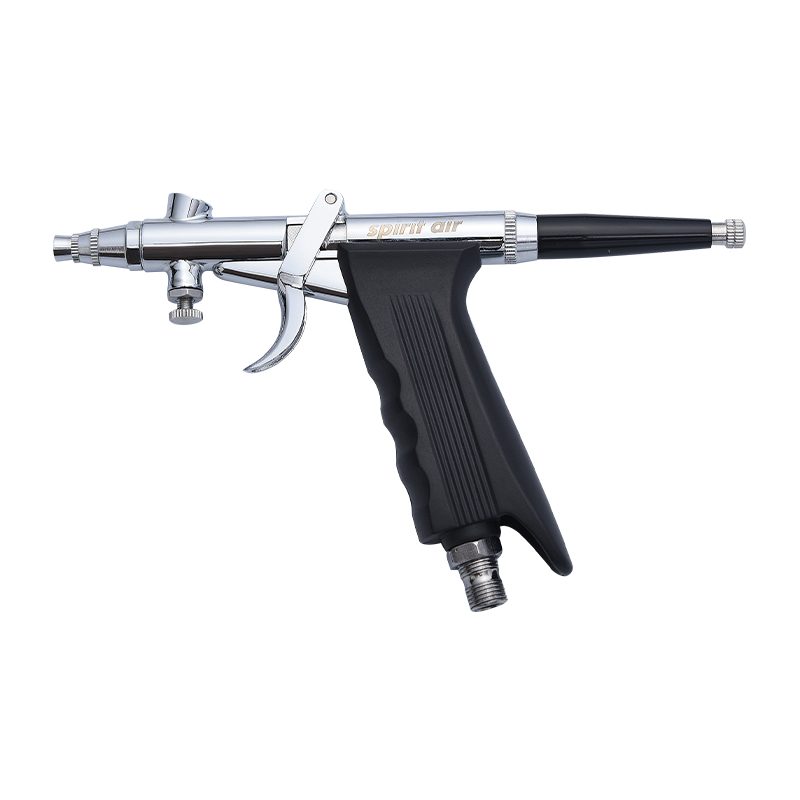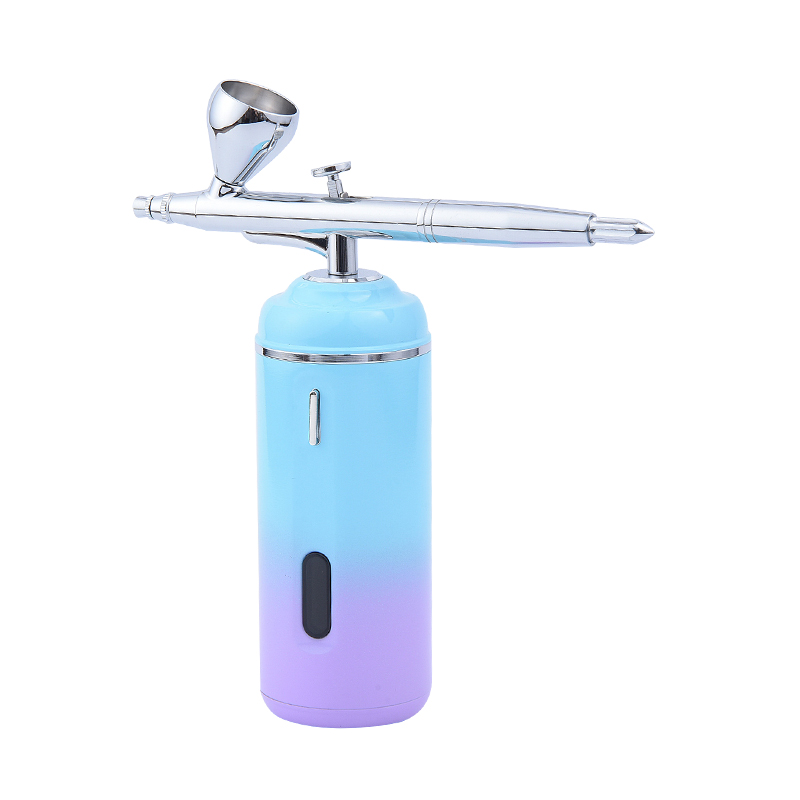Dec 08,2025
The makeup airbrush kit must not be stored directly after cleaning, and must be thoroughly dried and properly maintained. The reasons are as follows:
▸Residual moisture/cleaning solution corrosion risk: During the cleaning process, residual moisture or cleaning solvents are inevitable. If these liquids are left on precision components inside the airbrush (such as nozzles, needle valves, airways, and sealing rings), prolonged standing can corrode the metal surface, causing oxidation, rust, or scale formation, seriously damaging the performance and lifespan of the airbrush.
▸Residual solidification blockage: Even if it appears clean to the naked eye, the extremely fine channels and nozzle openings inside the airbrush may still adhere to diluted residual liquid. After standing and evaporating, these residues will dry and harden again, forming stubborn blockages that are extremely difficult to clean before the next use, causing the airbrush to malfunction.
▸Aging and deformation of sealing rings/gaskets: Rubber or plastic sealing rings, gaskets, and other components inside the airbrush that are soaked in water or solvents for a long time or in a damp state can accelerate aging, deformation, and loss of elasticity, leading to air and liquid leakage problems when the airbrush is used in the future.
▸Component adhesion and difficulty in starting: Needle valve (spray needle) and nozzle sleeve are core components that are very precisely matched. After the residual liquid dries in a narrow gap, it may adhere to the needle valve and nozzle, causing difficulty in starting and movement jamming during the next use. Forceful operation can easily scratch the precision surface.
▸Mold growth and pollution: A humid and enclosed environment is a breeding ground for mold growth. The residual organic ingredients in cosmetics or cleaning solutions inside may breed mold and contaminate the interior of the airbrush in a damp state for a long time. The next time they are used, they may contaminate the sprayed cosmetics, affecting skin sensation and even skin health.
▸Internal spring rusting: The spring that controls the airflow or needle valve inside the airbrush is exposed to a humid environment for a long time, which is prone to rusting and corrosion, resulting in weakened, ineffective or broken spring force, affecting the function and atomization effect of the airbrush.
NEVER Store Your Airbrush Wet: Post-Cleaning Storage Guide
| Stage | Action | Critical Reason |
| 1. Cleaning & Rinsing | Thoroughly clean ALL parts with appropriate cleaner. Rinse meticulously to remove ALL cleaner residue. | Residual cleaner can dry & harden into blockages; can corrode parts over time. |
| 2. Drying (MOST CRITICAL STEP) | Hand Dry: Use lint-free cloth/swabs to dry every surface, especially inside tiny nozzles and channels. | Trapped moisture causes corrosion, rust, mineral deposits, and sticky parts. |
| Air Dry (Optional but Recommended): Use low-pressure compressed air to blow out moisture from internal passages. | Ensures hidden moisture is removed from complex channels. | |
| Final Air Dry: Leave fully disassembled parts in a clean, dry, dust-free area for sufficient time to ensure TOTAL dryness. | Guarantees no hidden dampness remains anywhere. | |
| 3. Light Lubrication | Apply a TINY amount of airbrush-specific lubricant (or Vaseline) ONLY to the needle shaft and moving parts (trigger mechanism). | Protects against friction and seizing; NEVER lubricate the nozzle tip, paint/nozzle chamber, or air valve seats. |
| 4. Spring Relaxation | Ensure the trigger is NOT depressed (i.e., in the resting position). | Prevents springs from losing tension during long-term storage. |
| 5. Reassembly | Carefully reassemble ONLY IF completely dry. Alternatively, store critical parts (nozzle, needle, head) separately in a clean container. | Prevents accidental damage during storage; ensures no moisture gets trapped between parts. |
| 6. Storage Location | Store in a Cool, Dry, Dark, Dust-Free place. Avoid humidity, extreme temperatures, and direct sunlight. | Heat/humidity damages seals and invites corrosion; light degrades some materials; dust causes clogs. |






